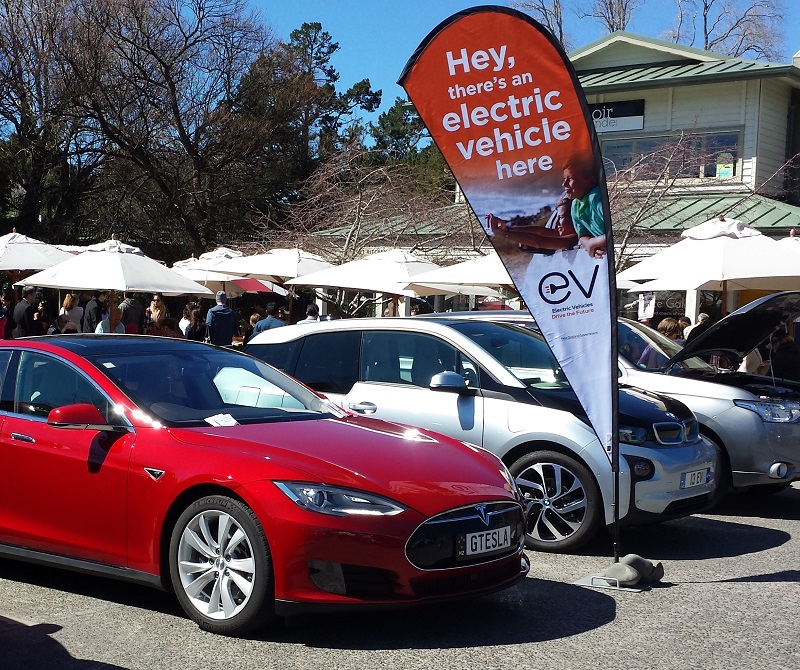We live in a car-loving country - and we're paying the price when it comes to climate change. That's why the N.C. Sierra Club wants North Carolina to become the "Green Roads State," and why our leaders are pushing for a transition to electric vehicles.
The transportation sector is the leading cause of greenhouse gas emissions in North Carolina (and nationally). Our state has more than 81,000 miles of roadway from the mountains to the coast. Our lifestyles are vehicle-intensive, particularly in rapidly growing urban areas. Vehicle miles traveled (VMT) across North Carolina continue to increase as cities sprawl outward, and people are experiencing longer commutes and more traffic jams.
Gov. Roy Cooper set ambitious goals for clean transportation, including for zero-emission vehicles (ZEVs), and greenhouse gas reductions with Executive Order 80. The goals were recently bolstered by Executive Order 246, which created more ambitious transportation emissions reduction targets and ZEV goals. The new targets aim to increase registered ZEVs to 1.25 million by 2030, ensure that 50 percent of new vehicle sales are ZEV, and call for a statewide Clean Transportation Plan to develop actionable strategies to reduce transportation emissions and increase ZEVs on the road.
 Jen Weiss was recently hired to oversee this work as the Senior Advisor for Climate Change Policy in the N.C. Department of Transportation. We sat down with her to learn more about her position and her plans for these ambitious initiatives. The interview is below (edited for length and clarity).
Jen Weiss was recently hired to oversee this work as the Senior Advisor for Climate Change Policy in the N.C. Department of Transportation. We sat down with her to learn more about her position and her plans for these ambitious initiatives. The interview is below (edited for length and clarity).
Congratulations on your new role as the Senior Advisor for Climate Change Policy in the N.C. Department of Transportation. Can you describe the responsibilities of this newly created role?And how does that show up in your day-to-day activities?
My role is to coordinate climate-related transportation activities both within and outside of the N.C Department of Transportation [NCDOT]. When Governor Cooper signed Executive Order 246, it kicked off a collaborative stakeholder process across the state and includes all types of transportation modes. Part of my work is to figure out that cross-sectoral process, and then engage and interact with all transportation stakeholders [i.e. multi-modal, transit, ferry, and highways]. For example, what are the different types of clean transportation opportunities and what are the actionable strategies we can collectively implement to make sure we meet the goals of EO 246 and the associated emissions reductions?
The other opportunity we have as a state is the funding coming from the federal Bipartisan Infrastructure Bill [also known as the Infrastructure Investment and Jobs Act]. The act allocates $5 billion to state DOTs, and North Carolina is expecting to receive $109 million over five years for electric vehicle [EV] charging infrastructure along our interstates and highways. The federal money will support EV infrastructure along major highways such as interstates 40, 85 and 95, as well as other federally-designated alternative fuel corridors like Highway 70. A state plan is due to the federal government on Aug. 1. Additionally, we want to engage with local communities to think through how to apply for future discretionary federal money that will be announced soon to support EV infrastructure not located along our travel corridors.
Governor Cooper recently issued Executive Order 246, part of which is focused on developing clean transportation options. What do you see as the biggest challenge with this executive order, and how can clean energy advocates work with you and N.C. DOT to help overcome those?
One of the biggest challenges in this work is to make sure all voices are included. What are the communities and people we should be talking to about transportation challenges and opportunities? The N.C. Clean Transportation Plan stakeholder process began with EO 246. We have 15 months to develop the plan and deliver it to the governor in April 2023. We plan to have four public information sessions over the next year to engage and educate the public.
The first stakeholder meeting on April 1 will be virtual. This session will outline the Clean Transportation Plan process and explain our five major work groups. The five topics include light duty zero emission vehicles, medium to heavy duty ZEVs, fleet transition [for government-owned vehicle fleets], VMT reduction, and alternative fuels and EV charging infrastructure. The National EV Infrastructure work will fall into the last category.
 Commitment to a clean energy economy also comes with a commitment to environmental justice and equity. We understand that the governor has announced EJ leads for agencies. What are the opportunities you see for the person in this role both at the N.C. Department of Transportation and in having a point person that advocacy groups can work with on issues important to the EJ community?
Commitment to a clean energy economy also comes with a commitment to environmental justice and equity. We understand that the governor has announced EJ leads for agencies. What are the opportunities you see for the person in this role both at the N.C. Department of Transportation and in having a point person that advocacy groups can work with on issues important to the EJ community?
N.C. DOT is in the process of hiring an environmental justice policy advisor who will lead the agency’s EJ work and will also work with me to ensure all Clean Transportation Plan work is completed with environmental justice in mind. One of the opportunities is developing an equitable Clean Transportation Plan to work with communities to better understand their transportation needs. The EJ policy advisor will help to identify and engage communities to help us in this work. We will make sure to announce this individual when he or she is hired.
What else should N.C. Sierra Club supporters know that you want to share with us?
The most important thing is assisting us in identifying the people and communities to engage. The EO 246 goals are statewide, and we cannot do this by ourselves. At the end of the stakeholder process, we hope to have engaged with a diverse group of stakeholders that have helped us develop an actionable clean transportation strategy that works for North Carolina.